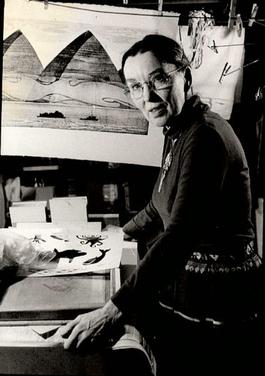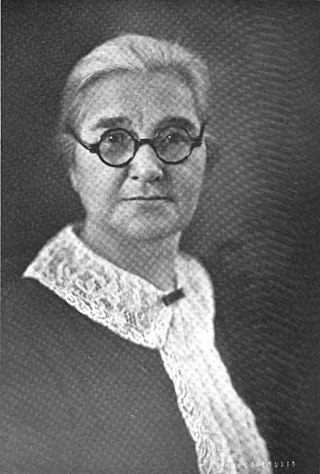
Southeast Alaska, often abbreviated to southeast or southeastern, and sometimes called the Alaska(n) panhandle, is the southeastern portion of the U.S. state of Alaska, bordered to the east and north by the northern half of the Canadian province of British Columbia. The majority of southeast Alaska is situated in Tlingit Aaní, much of which is part of the Tongass National Forest, the United States' largest national forest. In many places, the international border runs along the crest of the Boundary Ranges of the Coast Mountains. The region is noted for its scenery and mild, rainy climate.

The Tlingit or Lingít are Alaska Native Indigenous Peoples of the Pacific Northwest Coast of North America and are one of two-hundred twenty-nine (229) federally recognized Tribes of Alaska. Their language is the Tlingit language, in which the name means 'People of the Tides'. The Russian name Koloshi or the related German name Koulischen may be encountered referring to the people in older historical literature, such as Grigory Shelikhov's 1796 map of Russian America. Tlingit people today belong to two federally recognized Alaska Native tribes: the Central Council of the Tlingit & Haida Indian Tribes of Alaska and the Yakutat Tlingit Tribe.

Wrangell is a borough in Alaska, United States. As of the 2020 census the population was 2,127, down from 2,369 in 2010.

The Tlingit language is spoken by the Tlingit people of Southeast Alaska and Western Canada and is a branch of the Na-Dene language family. Extensive effort is being put into revitalization programs in Southeast Alaska to revive and preserve the Tlingit language and culture.

Admiralty Island is an island in the Alexander Archipelago in Southeast Alaska, at 57°44′N134°20′W. It is 145 km (90 mi) long and 56 km (35 mi) wide with an area of 4,264.1 km2 (1,646.4 sq mi), making it the seventh-largest island in the United States and the 132nd largest island in the world. It is one of the ABC islands in Alaska. The island is nearly cut in two by the Seymour Canal; to its east is the long, narrow Glass Peninsula. Most of Admiralty Island—955,747 acres (3,868 km2)—is protected as the Admiralty Island National Monument administered by the Tongass National Forest. The Kootznoowoo Wilderness encompasses vast stands of old-growth temperate rainforest. These forests provide some of the best habitat available to species such as brown bears, bald eagles, and Sitka black-tailed deer.

The Chilkoot River is a river in Southeast Alaska, United States, that extends about 20 miles (32 km) from its source and covers a watershed area of 100 square miles (260 km2). The source of the river is in the Takshanuk Mountains to the west and the Freebee glacier and unnamed mountains to the east. From its source, the upper reach of the river extends approximately 16 miles (26 km) to the point where it enters Chilkoot Lake. From the downstream end of the lake, the lower reach of the river flows for about 1.5 miles (2.4 km) until it enters the Chilkoot Inlet, a branch at the northern end of the Lynn Canal.

Mendenhall Glacier is a glacier about 13.6 miles (21.9 km) long located in Mendenhall Valley, about 12 miles (19 km) from downtown Juneau in the southeast area of the U.S. state of Alaska. The glacier and surrounding landscape is protected as part of the 5,815 acres (2,353 ha) Mendenhall Glacier Recreation Area, a federally designated unit of the Tongass National Forest.

Prehistoric Alaska begins with Paleolithic people moving into northwestern North America sometime between 40,000 and 15,000 years ago across the Bering Land Bridge in western Alaska; a date less than 20,000 years ago is most likely. They found their passage blocked by a huge sheet of ice until a temporary recession in the Wisconsin glaciation opened up an ice-free corridor through northwestern Canada, possibly allowing bands to fan out throughout the rest of the continent. Eventually, Alaska became populated by the Inuit and a variety of Native American groups. Trade with both Asia and southern tribes was active even before the advent of Europeans.

Nora Marks Keixwnéi Dauenhauer was a Tlingit poet, short-story writer, and Tlingit language scholar from Alaska. She won an American Book Award for Russians in Tlingit America: The Battles of Sitka, 1802 And 1804. Nora was Alaska State Writer Laureate from 2012 - 2014.

Richard Dauenhauer was an American poet, linguist, and translator who married into, and subsequently became an expert on, the Tlingit nation of southeastern Alaska. He was married to the Tlingit poet and scholar Nora Marks Dauenhauer. With his wife and Lydia T. Black, he won an American Book Award for Russians in Tlingit America: The Battles of Sitka, 1802 And 1804. He has translated works into German, Russian, Finnish, and Classical Greek.

William Lewis Paul was an American attorney, legislator, and political activist from the Tlingit Nation in Southeast Alaska. He was known as a leader in the Alaska Native Brotherhood, and became the first Native attorney and first Native legislator in Alaskan history.

Elizabeth Peratrovich was an American civil rights activist, Grand President of the Alaska Native Sisterhood, and a Tlingit who worked for equality on behalf of Alaska Natives. In the 1940s, her advocacy was credited as being instrumental in the passing of Alaska's Anti-Discrimination Act of 1945, the first state or territorial anti-discrimination law enacted in the United States.

Celebration is a biennial Tlingit, Haida and Tsimshian cultural event held during the first week of June in Juneau, Alaska, United States that occurs once every three years.

Baranof Island is an island in the northern Alexander Archipelago in the Alaska Panhandle, in Alaska. The name "Baranof" was given to the island in 1805 by Imperial Russian Navy captain U. F. Lisianski in honor of Alexander Andreyevich Baranov. It was called Sheet’-ká X'áat'l by the native Tlingit people. It is the smallest of the ABC islands of Alaska. The indigenous group native to the island, the Tlingit, named the island Shee Atika. Baranof island is home to a diverse ecosystem, which made it a prime location for the fur trading company, the Russian American Company. Russian occupation in Baranof Island impacted not only the indigenous population as well as the ecology of the island, but also led to the United States' current ownership over the land.

Nathan Jackson is an Alaska Native artist. He is among the most important living Tlingit artists and the most important Alaskan artists. He is best known for his totem poles, but works in a variety of media.
Walter Alexander Soboleff was a Tlingit scholar, elder and religious leader. Soboleff was the first Native Alaskan to become an ordained Presbyterian minister.

Dale Burlison DeArmond was an American printmaker and book illustrator.

Matilda Kinnon "Tillie"' Paul Tamaree was a Tlingit translator, civil rights advocate, educator, and Presbyterian church elder.

Rosita Kaaháni Worl is an American anthropologist and Alaska Native cultural, business and political leader. She is president of the Sealaska Heritage Institute, a Juneau-based nonprofit organization that preserves and advances the Tlingit, Haida and Tsimshian Native cultures of Southeast Alaska, and has held that position since 1997. She also served on the board of directors of the Sealaska regional Native corporation for 30 years, beginning in 1987, including as board vice president. The corporation, with more than 22,000 shareholders, founded the heritage institute and provides substantial funding.

Mayor Bill Overstreet Park, also known locally as Overstreet Park, is a beach and public park, located in the City of Juneau, the state capital of Alaska. The large, waterfront park stretches over half a mile, past two state office buildings. Its most notable feature is a breaching whale sculpture called Takhu, designed by Alaskan artist Skip Wallen and built in Anaheim, California. The sculpture was placed in a fountain, next to the Juneau-Douglas Bridge, overlooking Gastineau Channel. The park is within walking distance of Downtown Juneau, the cruise ship docks and Douglas Island. It was completed in 2018. A system of boardwalks and trails connect Downtown Juneau to the park.























